26-June-2009 – Comment Cari: “Bob Bringhurst (who’s responsible for Help Documentation for InDesign and InCopy), is acknowledging that the changed behaviour we’re seeing in CS4 is a bug. See his post ‘Page Numbering on a Single Spread Page‘.”
The following tip is the CS4 write-up of a Digitip 027 (written in 2004). Based on the comments below that particular tip, I’ve decided to add an CS4 step-by-step instructions, as it seems that possibly the change in terminology, Auto Page Number is now called Current Page Number… causes some confusion. In addition, the tip doesn’t work like it used to in earlier versions of InDesign 🙁
Like the previous tip, this tip looks at creating double page numbering on the right hand page, indicating the left-page number and right-page number in the same text frame on the right hand page.
Master page setup
Start by creating a new document, and select the Facing Pages option. Or alternatively work with island spread master pages. In your Pages panel double click the A-Master A or other Master page that is going to be the basis for the pages that will have the double page numbering on their right hand page.
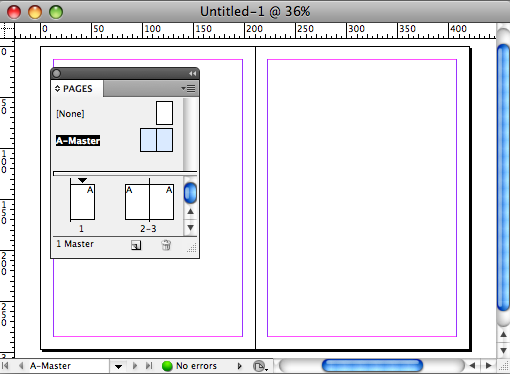
Your document will then display a page spread.
Two text boxes
On the left hand page draw a text frame (click drag with the type tool), then using the Selection tool, with the text frame still selected, click the Out port (see image below). Doing so changes the cursor into a loaded Type Cursor icon. With the loaded cursor, click-and-drag on the right hand page to create a second text frame.
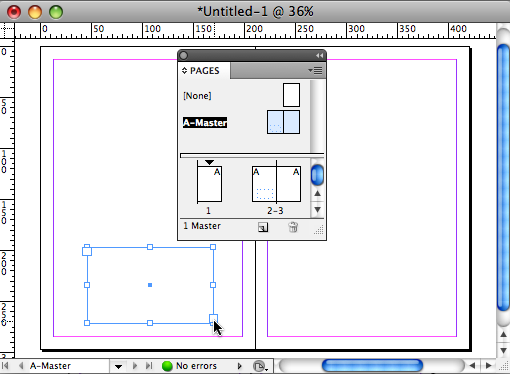
The two frames are now threaded. Double click with your Selection tool in the first frame to access the Type Tool again. You should see a flashing cursor in the first text frame.
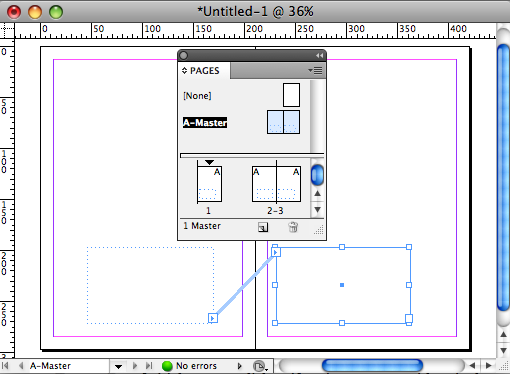
The page numbers
Now that the text cursor is flashing away, let’s force it to jump to the text frame on the right hand page, by choosing Type > Insert Break Character > Frame Break.
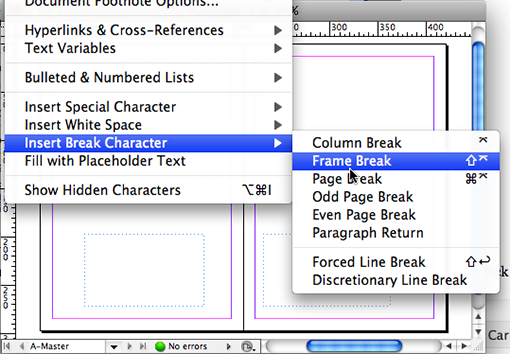
Now we are ready to include our (automatic) previous page number marker.
Choose Type > Insert Special Character > Markers > Previous Page Number to insert the marker for the Page number on the left-hand page (which is indeed your previous page).

Next insert the characters that sit between the previous and current page numbers. I’m inserting a pipe character in this example.
Time to insert the current page number now. This will set the actual page number of the right-hand page. Choose Type > Insert Special Character > Markers > Current Page Number to insert the marker for the Current Page Number

So now we have two “A”‘s in our master page indicating some automatic numbering occurring in A-Master (hence the letter A).
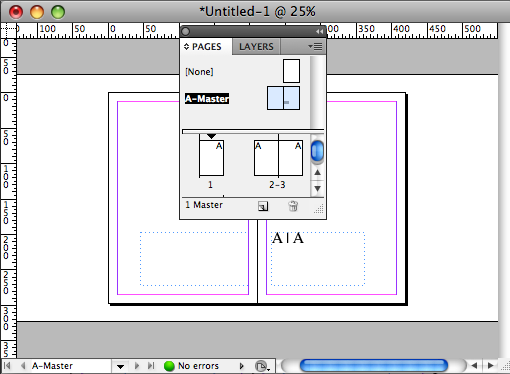
At this stage you might have the urge to test things and navigate to your document pages… but I can guarantee you things won’t work as they did in earlier versions of InDesign…
So here’s what you do next as a work-around to make things sort of work again in CS4. It’s a dirty trick not as clean and nice as it all used to be.
Alright. Pull up your Layers Panel (Window menu) and create a new layer called “PageNumber Frames”
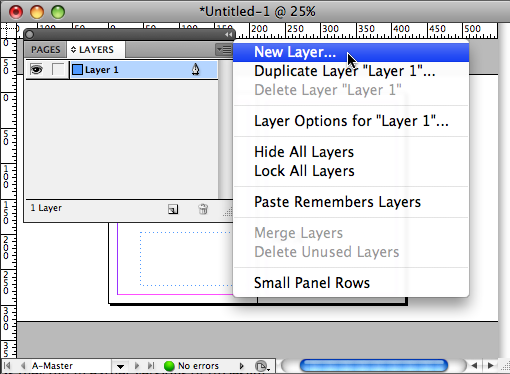
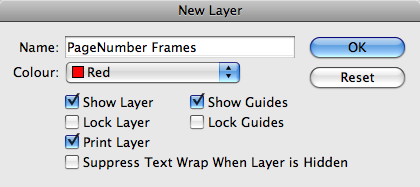
The dirty trick here is that we’ll have to ensure that ALL the frames involved in creating the page numbering are going to be overridden on the document pages of your document. Now that is a little bit of a painful task and you certain wouldn’t want to override all master page items… It defeats the purpose of using master page items doesn’t it?
So the trick here is that you must ensure that the frames involved with this page numbering tip are placed on their own unique layer.
Select the frames, then click and drag the little icon in the Layers panel that points to you having something selected into your newly created layer.
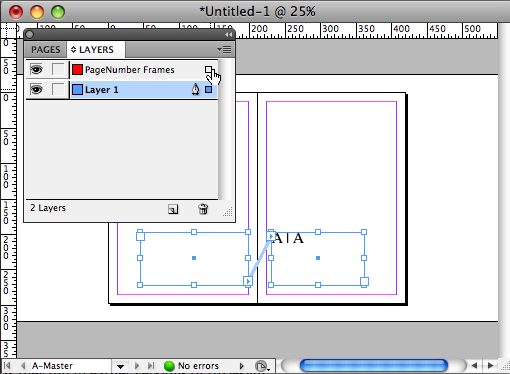
Leave this as it is further and start the work on the rest of your document. Complete your pagination and your page designs and when you’re finished with that lock all BUT the PageNumber Frames layer.
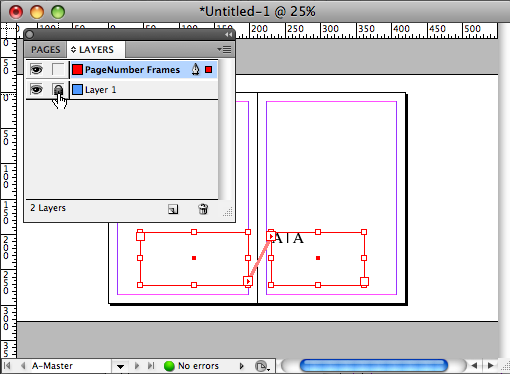
Yay, now it is time to return to your document pages.
In the Pages panel select (double click) the first page of your document, scroll down to the last page of your document. Press the Shift-key on the keyboard and click the last page of the document in the panel. All pages should now be selected.
Next choose Override All Master Items from the Pages panel menu. Because we had all other layers locked, any other master page items NOT placed on the only unlocked layer will remain as they are and won’t be overridden.
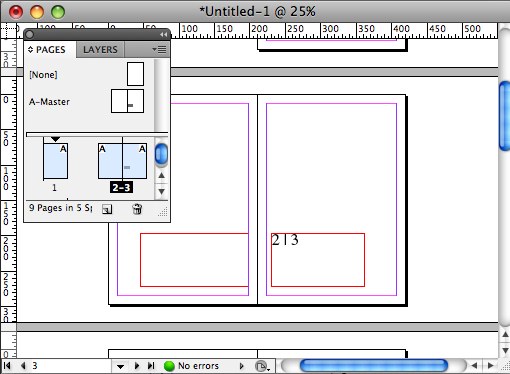
Thanks for sharing this. But how about if I need it on even and odd page too?
I have a 11″ x 8.5″ landscape document in CS3. The doc is made of non-facing pages as it is meant to open on the 11″ side like a calendar. I need the bottom page in the spread to automatically show the page number of the top and bottom pages. How can I do this with non-facing pages?
Hi Sam, I think you should be able to use the same technique as described in the blog-post, but as you don’t have a master spread a little more difficult as you’d need to do this manually I’d say (the threading to previous page frame to get the previous page details listed).
@Juan Glad this write-up helped you out 😉 flowers always welcome 😉
Hi Che,
I noticed you use a slightly different technique, you are using a single text-frame where I used two separate ones that are threaded. Interesting find that using a single text frame with the center anchor point on the left page works!
Thank you so much for sharing that!
Xièxie
Cari
try this, it works for me in CS4
http://www.missyuan.net/school/theory_2010/theory_2401.html
That’s crazy, can’t imagine someone even thinking about that.
@milinda Excellent news! thanks for the positive feedback too.
This is a great post… Helped me & my colleagues to solve a great problem we had with several publications. Thanks a lot Cari.
@Emma 🙂 thank you 🙂
I have almost gone mad trying to figure out why you can do this easily in CS3 and CS5, yet CS4 (the version I have at home – typically), does not, I don’t know how you figured it out but you’re an absolute star!
Thank you!!!
: )
@Joël
As far as I can tell this IS fixed in InDesign CS5, it works like it used to.
I’ve been searching alot to solve this and your tip does the job! thnx.
But why isn’t it fixed in ID CS5 🙁
@Jade
Thank you so much for your kind words. I’m glad it worked 🙂
Cari
This is the best explanation for the double page numbering option. i have read several others and they never work… thanks a lot
you can share this file for me?? pls….
thanks a lot, it works! i wasn’t sure until last step… but now it’s fine, what a relief!
@Muel. That’s great news 🙂